These are some of the women who are making a big difference in Central New York
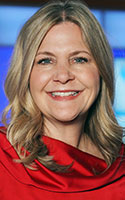 Amy Collins
Amy Collins
VP, GM of NBC3, CBS5 and CW6
‘The vision I had for our team, when I became GM seven years ago, was to take our stations to No. 1, through a commitment to our community and business partners’
By Mary Beth Roach
Television has provided entertainment and news for decades. But, there is a great deal of behind-the-scenes at work.
Making sure those programs air on the local stations NBC3, CBS5 and CW6 and keeping them profitable is Amy Collins, vice president and general manager of the three stations and their website CNYcentral.com. She is also an associate group manager with Sinclair Broadcasting, which owns and operates the Syracuse stations.
“Working with my team of department head leaders, I’m responsible for news, sales, engineering, programming, promotions and the overall business,” she said.
In addition to local news and network programs, there are many syndicated shows and sports on the schedule and Collins is ultimately the one who decides on when and what shows air.
These choices have a big impact on the bottom line.
“There’s a cost and benefit to all of those shows. Programming decisions equate to bringing more viewers or less viewers to the stations. The more viewers you have, the more valuable that program or station is to advertisers, which is how we fund all the salaries, technology investments, program costs and resources needed to support the organization and serve the Central New York community. It’s a balance to program with the shows that are going to make our stations home to the most-watched, fan favorites,” she said.
Collins became the vice president and general manager of the triopoly seven years ago this July, bringing a wealth of sales and business experience. She had been an account representative with The Post-Standard, the now-defunct Herald-Journal and Herald-American, moved to WTVH-5 in early 1999 and worked her way up through its sales, eventually becoming the general sales manager. Within weeks of WTVH merging with WSTM and CW6 in March 2009, she was promoted to vice president of sales, overseeing all three stations and five years later was promoted to vice president and general manager. WTVH would eventually become better known to local viewers as CBS5 and WSTM as NBC3.
“The vision I had for our team, when I became GM seven years ago, was to take our stations to No. 1, through a commitment to our community and business partners,” she said.
While NBC3 has grabbed that top spot, she said CBS5, and to a lesser degree CW6, ratings have also grown, “which is wonderful to see as a result of the great team we have, the improvements we’ve made and how we position and program our stations.”
Today, the triopoly is the leading broadcast media operation in the Syracuse designated market area, she said. Nielsen’s DMA includes 7½ counties surrounding Onondaga, with station coverage spilling into parts of Watertown and the Southern Tier.
When she took over the stations, WTVH and WSTM had only been merged for five years. While today, these mergers are fairly common in the industry, it was more unique at that time, and it had been a difficult transition, with layoffs occurring at both stations, a great deal of negative media coverage and some unhappy WTVH viewers.
“That was a challenging time for all involved,” she said. “But it was ultimately the best business decision for the long-term sustainability of the stations and allowed us to continue to offer multiple news options and voices in the marketplace.”
Another challenge for Collins, of course, has been the COVID-19 pandemic. She applauds her team’s ability to adapt. The stations had to deploy about 40 of their 100-person staff to work remotely last year. Revenue for the station, she said, “was dramatically impacted because our business partners were all struggling during the pandemic.” Yet, the sales department persevered, she noted, and the news department worked tirelessly to inform and protect the community.
“The news team going out in the field, to report the news and keep everyone safe, put themselves at risk,” she said. “Yet, they did it with such a deep sense of duty and pride.”
Collins added, “None of what we accomplish in news or sales can be achieved without the contributions from our master control, engineering, promotions and business departments.”
With challenges come rewards, and to Collins, it’s the achievements made by the stations’ team that mean the most to her. These include fundraising initiatives that have raised more than $1.2 million for local nonprofits in 2020 alone, the introduction of a new local newscast, and many new award honors.
“I’m so incredibly proud when we accomplish a goal as a team or we launch a new venture with great success like the 7 p.m. news in October of 2019,” she said. The newscast was created for families who are busy during the early evening traditional 5 p.m. and 6 p.m. time.
The Edward R. Murrow Awards for “Overall Excellence” and for “Best Documentary,” were awarded to NBC3 and the Sinclair stations in Rochester and Albany for their New York state special titled, “The New, New York,” which focused on how the pandemic has changed our lives. Chief Meteorologist, Wayne Mahar, will be inducted into the New York State Broadcasters Hall of Fame later this year.
The best achievement, she said, is the positive feedback they get from viewers, business partners and the stations’ employees.
“When we hear from our team that they’re happy, working hard toward our goals and are having a fun while doing it…when we see them building each other up, I know we’re doing something right,” she explained.
Lifelines
Amy Collins
Birth Place: Central New York
Residence: Fayetteville
Education: Bachelor’s degree in marketing from SUNY Oswego; MBA from LeMoyne College
Affiliations: President of the Ronald McDonald House board of directors; vice chairwoman-TV, NYS Broadcasters Association board of directors
Hobbies: Spending time with her family; traveling
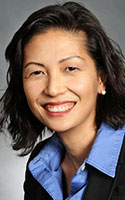 Keiko Kimura
Keiko Kimura
Associate VP & Dean of Cayuga Community College’s Fulton Campus
‘Being part of an industry sector that leads to self-empowerment and continuous improvement is what keeps me in the field of education and training’
By Steve Yablonski
As the child of two Japanese immigrants, Keiko Kimura was always interested in how public education can serve as the access point to a better life, more opportunities and the chance to contribute to the vitality of a community.
Now, as associate vice president and dean of Cayuga Community College’s Fulton Campus, she is at the forefront of that crusade.
Kimura not only oversees the branch campus in Fulton but has college-wide responsibility for the offices of assessment, institutional research, library, and Center for Academic Success.
Founded in 1953, Cayuga Community College is one of 64 accredited institutions that make up the State University of New York system. Courses are offered at campuses in Auburn and Fulton and online.
Kimura came to Cayuga Community College with a strong background in academic affairs having held various administrative and teaching positions in the United States, Japan and Chile.
“I’ve worked in the community college sector for almost 20 years, starting as a part-time ESL [English as a second language] instructor at a college branch campus. This was after I had spent six years teaching and living abroad, first in Japan and then in Chile,” she said.
She has been with the college since 2017 and says “it’s been an invigorating four years.”
“I am thrilled and honored at the opportunity to be a part of the Cayuga community,” she said in a interview in 2017. “During the interview process, I met so many talented and motivated staff, faculty, administrators and board members, not to mention some very impressive Cayuga Community College students. I look forward to making positive contributions to support the college’s ongoing commitment to student success.”
“Since starting at Cayuga, I’ve been proud of the moments where our college partners with local businesses, agencies and school districts to create new opportunities and career avenues,” she said recently. “We developed an occupational therapy assistant program, which offers a degree in an essential healthcare field. Our early college high school program is a great example of us partnering with school districts and businesses to establish pathways for high school students to earn college credits toward college degrees in information technology or health sciences.”
“The Advanced Manufacturing Institute we’re establishing on the Fulton Campus is another example of us partnering with businesses and agencies to advance workforce development. All of these examples are essential to our mission and examples of how we’re working to support our students and the community,” she added.
Prior to coming to the Fulton campus, she was the dean of language arts at San Jose City College in California. Before that, she was the associate dean and then dean of academic enrichment and language studies at William Rainey Harper College in Illinois.
Creating pathways
“I’m more recently involved in engaging with local employers to create pathways into careers as well as opportunities for skill enhancement leading to career advancement. This is a new arena for me but very timely given the current global situation,” she said. “I’ve been very fortunate to have received a very warm welcome from the workforce community here in both Oswego and Cayuga counties.”
Her philosophy on education is simple.
‘Exploration, being open to new ideas and demonstrating respect and sensitivity for the perspective of others are values that I have learned from [my parents].’
Education, she said, is a social and economic equalizer. Therefore, it belongs to everyone.
“The pandemic has taught me patience and also forced me to increase my organizational skills,” she said. “It’s a challenge to spend your work life and your home life in a confined space, especially with a teenager!”
“My parents influenced me the most. I admire them both so much for taking the leap to leave their home country in search of new opportunities,” she said. “Exploration, being open to new ideas and demonstrating respect and sensitivity for the perspective of others are values that I have learned from them.”
Her parents emigrated from Japan in the late 1960s, she said.
“My dad was trained as an instrumentation technician and came to Canada ready to be a part of a land full of opportunities,” she said.
Neither of her parents was fluent in English.
“But, they both worked hard to learn the language and the culture by enrolling in adult English as a second language classes in the evenings,” she added.
Although she did not grow up thinking that she would end up in education, “when I eventually found myself teaching ESL (first abroad and then in the suburbs of Chicago) it struck me that my work as an instructor was now supporting the same system that helped my parents rise through the socioeconomic ranks, enabling them to support their local economy,” she said.
“Like my parents, the students in my classes could see that education would provide them with the tools they needed to become contributing members of their community in their new country,” she continued.
She holds an Doctor of Education degree in adult and higher education from Northern Illinois University, a Master of Arts degree in teaching English to speakers of other languages from Teacher’s College, Columbia University, and an undergraduate degree in biology from McGill University.
“In addition to the fact that I will always have deep respect and interest in the teaching and learning process, being part of an industry sector that leads to self-empowerment and continuous improvement is what keeps me in the field of education and training,” she said.
Lifelines
Keiko Kimura
Birth Place: Canada
Residence: New York
Education: Doctor of Education degree in adult and higher education; Master of Arts degree in TESOL (Teaching English to Speakers of Other Languages); Bachelor of Science in biology
Hobbies: Cycling, reading
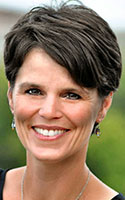 Heather DelConte
Heather DelConte
President of Oswego City School District Board of Education
‘It’s hard to regret a life devoted to service’
By Steve Yablonski
Heather DelConte grew up on a small farm outside Ithaca. Her father was an agricultural engineer.
“I also spent a few childhood years living in New Delhi, India, with my family while my father helped local farmers,” she said.
She met her husband, Scott, while they were both studying environmental sciences at Cornell University, where she also obtained a Masters of Science degree in education.
“Scott and I married in 1996 and lived for a few years in Lexington, Virginia, while he completed his law degree,” she said. “During some of that time, I worked as a family development specialist for the Total Action Against Poverty HeadStart program. In 1998, we returned to our Central New York roots and moved to Oswego.”
Scott worked as an attorney for Bond, Schoeneck and King, PLLC, and Heather became the human development educator for Cornell Cooperative Extension of Oswego County.
“In 2006, after welcoming four children into our tiny Oswego city home, we started Black Creek Farms in Volney, specializing in registered Hereford breeding stock and heritage sheep,” she said. “In 2017, we embarked on another business venture when we opened the DelConte Law Firm.”
They ran the firm together until 2019, when Scott began his term as a New York State Supreme Court Justice.
Over the years, she has been very active in many local community service organizations and served on a number of boards (Oswego City-County Youth Bureau, Oswego County Farm Bureau, Cornell Cooperative Extension of Oswego County). She has also coached for youth athletic programs (Fulton Youth Soccer, Leprechaun League), ran a large county-wide 4-H dog obedience club, served as the educational and youth livestock superintendent for the Oswego County Fair, worked to promote agriculture through educational programs at area schools and served in various mission-related capacities at the United Methodist Church in Oswego.
Their two oldest daughters are now attending Cornell University and their two sons are students at Oswego High School.
“In 2013, I was elected to the Oswego City School District Board of Education for a three-year term,” she said. “I was elected in 2015 to represent parts of the city of Oswego, Scriba and Volney in the Oswego County Legislature. In 2019, I was reelected and returned to the school board, where I have served as president for the last two years.”
“I decided to run for the Oswego County Legislature when, as a school board member, I began to realize that many of the issues we faced as a school district had systemic roots in the larger community. I had come to understand that many problems plaguing the school’s ability to be successful require solutions with greater reach, Oswego’s troubling health indicators, for example, and generational poverty,” she explained.
As a county legislator, her most rewarding moments included interacting directly with her constituents and the ability to link them to needed resources or county services.
She also used the position to advocate for agriculture, education, youth, and environmental and fiscal sustainability. She helped encourage research-based nutrition curriculum in county school districts and supported comprehensive family support programs.
“I served on special committees intended to grow county agriculture and spoke often on the floor about keeping tax dollars local and maintaining a fiscally conservative approach to decision making while facing unpredictable changes in our county revenues,” she said.
Full circle
“Ironically, while I was serving in the legislature, I came full circle in my understanding of community challenges and our limitations to productively address them. I began to realize that if our schools fail to meet the emotional and educational needs of all students, we will not be successful as a community. I developed a respect for the direct connection between the health of our schools and that of our county,” she explained. “I decided to return to my roots and passion, only this time with a macro-understanding of where school board work fits into the grander perspective.”
She said she is “so grateful” for her years in the legislature as they provided her with tools and networks that she has been able to bring back to the district.
“I feel very strongly that Oswego, both the county and city school district, will grow in a sustainable, healthy manner if we support a culture of inclusion and embrace the diversity inherent in this community. This involves authentic, institutional self-reflection and subsequent action,” she said. “I am excited to collaborate with the board and the administration to complete this important work.”
With so much national and global division right now, the pandemic has been an ironic source of common ground, according to DelConte.
“Although it has certainly posed various degrees of challenge for different people, we have all had to deal with it at some level. Personally, it has forced me to slow down, enjoy simplicity, think creatively and listen more,” she said. “Relative to the school district, the pandemic has reinforced my commitment to supporting a tide that lifts all boats. It has also highlighted my lack of skill with computers and technology.”
She said she feels the most at ease when she’s on the farm, on a sunny day, working with her family.
“There really is no substitute for feeling a sense of cooperative accomplishment, all while enjoying the beauty of God’s creation,” she said.
A big influence
“My husband, Scott, is an incredible source of encouragement and support. But, he also continually pushes me to move out of my comfort zone, which allows me to grow as a person,” she said. “Our children teach me something new every day and continually challenge me through their examples to be and do better. I am also very fortunate to have had parents who instilled in me the value and importance of dedicating my blessings to the service of others.”
“The only thing I want out of life is to use the gifts and talents divinely given to me to bless others. It’s hard to regret a life devoted to service,” she said.
Lifelines
Heather DelConte
Birth Place: Madison, Wisconsin
Residence: Black Creek Farms, County Route 45, Volney
Education: Cornell University (BS ‘95; MS ‘98)
Affiliations: Oswego County Farm Bureau, American Hereford Association, Oswego County 4-H, Oswego County Fair, Oswego First United Methodist Church
Hobbies: Farming, hiking, national park and Civil War battlefield exploration, painting/art, horseback riding, dog training, canoeing
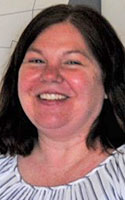 Karen Belcher
Karen Belcher
Executive director of the Food Bank of Central New York
‘Food is one part of poverty. How do we serve the whole person going forward?’
By Mary Beth Roach
It was January of 2020, and Karen Belcher was named interim executive director of the Food Bank of Central New York. She knew the organization well, having started there in 2001 as its comptroller, overseeing the finance department, human resources and shared technology resources, before being named the chief operating officer in 2015.
Then less than two months later, the COVID-19 pandemic hit and everything changed. Many businesses had to close, causing people to lose their jobs or be furloughed. The need to feed families and individuals throughout the 11 counties that the organization covers skyrocketed.
The search for the new executive director was suspended as Belcher and the Food Bank staff and volunteers readied themselves, their agency and their partner programs to meet that need.
According to Belcher, in the 2018-2019 fiscal year, (July 2018-June 2019), the Food Bank distributed about 15.6 million pounds of food, the equivalent of more 13 million meals. In contrast, in the fiscal year 2019-2020, because of COVID-19 and its impact from March to June 2020, the organization distributed about 20.4 million, which equates to approximately 17 million meals.
She further pointed out that they distributed approximately two million pounds each month from March to June of 2020, whereas a normal month’s distribution is around 1.4 million. That’s a 43% increase in monthly pounds distributed. For the calendar year 2020, about 24.1 million total pounds were distributed, equating to a little more than 20.1 million meals.
She expects that for fiscal year 2020-2021, the Food Bank will distribute 24 million pounds of food, due to its work and distribution of food going up more than 50%. She anticipates that the need will continue and they will be in what she referred to as “recovery mode” for a good year or more.
And a lot of new ideas came out of it as well, according to Belcher.
Usually, when new ideas are proposed, she said, it requires months of strategizing.
“You didn’t have a month. You thought of it and you said, ‘Let’s do it.’ And we did it,” she said.
New streams of inventory were coming in; the programs that the Food Bank works with, such as food pantries, had to rethink change over to a drive-through model; and new partnerships and programs were developed, she explained.
“To look back at the past year, it’s incredible to think of all that we went through,” she said. “I’m really, really proud of how the staff just jumped in when the pandemic hit, the collaboration and the teamwork from all of them to make sure our work continued.”
Yet, these weren’t the only changes. Belcher, who had served on the search committee for that executive director, withdrew from that group and put her name in contention for the job herself on a permanent basis.
Prior to COVID-19, she said she hadn’t considered taking the executive director position, since she enjoyed work on the operations side of the organization. But as the pandemic continued, she began to give it more thought.
“As I went through the first few months of that, I was ‘If I can get through this, I can get through anything.’ I enjoyed working with the staff in this new capacity, working with the community, the collaborations that have been built throughout the 11 counties,” she said.
After the search committee reviewed about 80 applications, Belcher was offered the job September 2020.
Her responsibilities as the executive director include overseeing the staff, resources, the financials, the budget, interacting with its many donors and community partners, making sure they remain fiduciarily responsible, and making an impact in the community.
One of the 200 food banks under the Feeding America organization, the Food Bank of Central New York is the main supplier of food for about 280 emergency food programs, such as food pantries and soup kitchens, in its 11-county service area, which comprises Cayuga, Chenango, Cortland, Herkimer, Jefferson, Lewis, Madison, Oneida, Onondaga, Oswego and St. Lawrence counties. The Food Bank also works with some non-emergency partners, selling them product at the wholesale price. Servicing those programs and picking up donated product is a fleet of 17 vehicles, up from three when Belcher started two decades ago. In addition, the Food Bank offers direct services through various programs.
In addition, it offers a community outreach program that assists families and individuals with the SNAP program.
The Food Bank of Central New York’s budget is $14 million annually. In addition, donated foods from food drives, individuals and manufacturers and products from the retail partnership program — including Aldi’s, Hannaford, Walmart, Wegman’s, Target and Sam’s Club — and the USDA Commodities, all add to the total revenues and expenses for the year. These bring the valuation closer to $27 million to $28 million.
Looking toward the future, Belcher would like to see the Food Bank work with other community partners to take a more comprehensive view of poverty and the individuals they serve.
“Food is one part of poverty,” she said. “How do we serve the whole person going forward? I think success for me is to see pounds go down and knowing that food insecurity rates have decreased in our service area. We can’t do that alone. So, it’s really building those partnerships, building the awareness and getting help to families and individuals, whether it’s job training, housing, transportation. How do we help them to live the best life that they can?”
While she has held this job for a relatively short time and during extreme circumstances, she has found many favorite things about it, so many she said she didn’t know which one to put first. One is her team at the Food Bank. “They’re incredible. Their ideas, their thoughts, their energy. They’re amazing. This year was just incredible with all of them. I’m so thankful for them. That’s just as rewarding, to be able to work alongside of them.”
Another one comes from the individuals and families they serve. She told of a woman who came through one of the distribution sites last year, and when she received her food, she gave the workers irises from her garden as a way of saying thank you. These flowers have been planted along the walkway that leads to the main entrance of the Food Bank facility on Interstate Island Road, near Warners.
“To me, that’s a reminder of the joy that we bring to individuals, the happiness for families to be able to put a meal on a table. I think seeing that and being able to be part of that, that’s very rewarding,” she said.
Lifelines
Karen Belcher
Birth Place: Auburn
Residence: Mexico, Oswego County
Education: Bachelor’s through the former SUNY Institute of Technology (now SUNY Polytechnic Institute), Utica; also earned her CPA
Affiliations: AICPA (American Institute of Certified Public Accountants); NYS Society of CPAs; treasurer of Feeding New York (the NYS Association of Food Banks)
Hobbies: Gardening both flowers and vegetables, baking, canning (learned from her mom) during the summer and fall
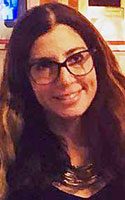 Lauren Kochian
Lauren Kochian
President of the Milton J. Rubenstein Museum of Science and Technology
‘My goal specifically for myself as president is to make sure that the workplace is enjoyable, fair and fun’
By Mary Beth Roach
It’s hard to have a bad day here when you work in a science museum because it is a lot of fun.”
This, according to Lauren Kochian, president of the Milton J. Rubenstein Museum of Science and Technology (the MOST), in downtown Syracuse’s Armory Square.
While the MOST is a lot of fun, with its big and bright hands-on displays, there is a business side to the operation that Kochian oversees, enabling thousands of people of all ages to enjoy its many exhibits and programming.
Kochian began as the MOST’s chief director of development in 2016 and quickly rose through the ranks, becoming vice president and then president in the summer of 2019.
As the head of the museum today, she manages a staff of about 25 and works with the supervisors of the various departments, including facilities and operations, education, finance, information technology and guest services. In addition, she works with the museum’s board of trustees and the board of its foundation and, since the MOST is a nonprofit, Kochian said she does a lot of fundraising.
The mission of the MOST, she explained, is “to provide informal and science education in a way that is hands-on and in a way that is fun” through exhibits, programs and special events.
It’s this mission that drives their business model.
“We shifted away from just being a place to come look at exhibits to a place where students can get science education programming,” she said.
The operational side of the museum, which amounts to half of its $2 million annual budget, includes admissions, membership, birthday parties, facility rentals and educational programming. Each of these categories has a budget, a marketing plan, a calendar and a staff. The MOST’s foundation, which is key to its fundraising efforts, makes up for any deficit.
Adding to the expense of the operation is the fact that the MOST is located in a former armory building that is more than 100 years old, with 35,000 square feet of exhibits and annual attendance of about 120,000 people (pre-COVID-19).
“One of our goals, because we’re in a 110-year-old building, is staying on top of capital improvement projects and making sure that the building doesn’t get to a place where something has to close. That’s a huge part of the day-to-day work,” Kochian said.
Like so many businesses in the past year and a half, the COVID-19 pandemic has forced the MOST to look at different ways to raise revenue. They have increased the number of summer camps this year to about 15, and they are already sold out. They introduced the STEAM Explorers program, offering hybrid and virtual school students more STEAM (Science, Technology, Engineering, Arts & Mathematics) support, supervised homework and remote schoolwork with MOST education staff, museum exploration and STEAM projects and games. And the staff is welcoming the Slime Lab this summer.
Yet, Kochian and her team are looking at the silver lining to the pandemic.
“We try to make an opportunity out of this pandemic,” she said.
One of those opportunities is a new state-of-the-art digital planetarium and theater. Because that portion of the MOST was already closed due to COVID-19 and since the theater with dated equipment is not financially feasible, she said, they have embarked on a massive capital campaign to reopen the theater in a digital format. The unique domed screen will remain; there will be more than 200 seats and they’ll be adding planetarium shows, documentaries and a multi-media lab.
“It’s more than a $2 million project. So it’s a tall order. The business model for an analog theater is just not profitable. Companies aren’t making analog films, so you’re paying exorbitant amount for a film or you’re using an old film, in which case your ticket sales are never going to be what they need to be,” she explained. They are planning an opening in 2022.
Because of an anonymous donor’s offer to do a matching campaign, Kochian said their goal is to have $1 million in matched dollars by November, which marks the 40th anniversary of the MOST, which actually started in a building on Clinton Street.
As a result of the pandemic, the MOST’s summer camps have also seen an increase. They had been doing three one-week camps, but now they’re doing about 15 camps, which are all sold out for the 2021 summer season, she said.
She credits her team with much of the MOST’s success, but it also speaks to the culture of the workplace and her leadership capabilities.
“My goal specifically for myself as president is to make sure that the workplace is enjoyable, fair and fun. When the culture is good in an organization, my work almost does itself,” she said, with a chuckle. “We have a staff doing a job and doing it well.”
She said she believes her greatest leadership skill is her ability to see other people’s talents and how to bring out those strengths. She also strives to lead by example.
“I see myself as a problem-solver. I don’t need to tell you how to do your job,” she said. “A lot of our supervisors encounter problems, and I see myself as the person that helps them through that. I also try to model good leadership skills, the kind of behavior that I want to see, so that the staff better understands how to be leaders themselves.”
Lifelines
Lauren Kochian
Birth Place: Syracuse
Residence: East Syracuse
Education: Bachelor’s and master’s degrees from Syracuse University
Affiliations: President of Arts and Cultural Leadership Alliance in Onondaga County; member on the advisory council for Golisano Children’s Hospital
Hobbies: Spending time with her two teenaged children; running; an avid dog-walker, enjoying fitness in Central New York’s four seasons
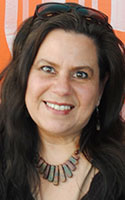 Marisol Hernandez
Marisol Hernandez
Editor-in-chief of the CNY Latino newspaper, producer of ‘Hablando con Central New York’ radio show
‘We realize that a lot of the [Latino] business owners might not know all of the rules and regulations that need to be followed here’
By Mary Beth Roach
So much of Marisol Hernandez’s professional life has been about realizing opportunities and “paying it forward.”
Moving to the Bronx at the age of 20 in 1984, with her mother, from Puerto Rico, she only spoke Spanish. She was encouraged by family and friends to continue her schooling, get a college degree and learn English.
“When I came from Puerto Rico and started my professional life in New York, I realized that a lot of the opportunities I had and a lot of the things I learned about the community I was moving into were passed down to me by people who were there before,” she said.
Now, she is helping to create possibilities for other Latinos in the Central New York community.
She serves as editor-in-chief of the “CNY Latino” newspaper, which she and her life partner, Hugo Acosta, run as part of a media consortium. The other components of the media group include a radio program, called “Hablando con Central New York,” of which she is the producer; and a translation interpreting service, which she oversees as manager. The weekly radio show broadcasts Wednesdays on 87.7 FM and WVOA.com. The translation and interpretation services, she said, came about because they saw that advertisers needed to have their websites translated and to recruit bilingual people for their companies.
These services are not limited to material for the newspaper and its advertisers, but for any material that needs to be translated into either Spanish or English.
What’s more, she was hired to run a program called “Exito!” (which means success in Spanish) several years ago, a small business training development program through the WISE (Women Igniting the Spirit of Entrepreneurship) Women’s Business Center (WBC), which is administered through the Syracuse University’s Whitman School of Management and the Small Business Administration.
She has been able to link her career endeavors with her ongoing interest in serving the community.
She and her mother moved to Auburn in 1995, where she worked in a Headstart program and earned her bachelor’s degree in human and community service, with a concentration in child and family studies. However, she said she came to realize that she was not really reaching into the Hispanic community through her job there as she had wanted to, so she began to research where the largest Latino populations were in Upstate New York. She was very close to applying to SUNY Brockport, near Rochester, for a master’s degree in social work, but when she learned about a job opening at the Spanish Action League during a visit to Syracuse, she applied and got the position in 1999. A few months later, she was named to the youth development center at the Spanish Action League.
She also met Acosta in 2004 and began attending business shows with him in her free time as a means to help expand exposure for the “CNY Latino” newspaper and to build more contacts in the Latino community.
After the grant that was funding her job at the Spanish Action League was cut, she left there and began studying the business part of Acosta’s media company.
Through the business shows and by being out in the community, she and Acosta found that the Latino would-be entrepreneurs needed guidance in getting started.
“We realize that a lot of the business owners might not know all of the rules and regulations that need to be followed here. Some people put their life on the line; they get a mortgage and start a business. But if they don’t do it right, they will fail. So, getting them connected to those resources that we know are out there is important for them to be successful,” she said.
Being someone who can open doors for people is important to Hernandez and she opened a big one several years ago when she and Acosta brought an idea to the WISE Women’s Business Center (WBC).
The pair had been attending several annual WISE symposiums, offered by the WBC, when they began to notice that few Latinas were attending. They approached the WBC and proposed that Hernandez host a session for Latino women. And since 2011, there has been a WISE Latina session as part of the annual symposium.
The program and symposium would energize the women for a while, but Hernandez said, there were few who would go back to the WBC during the year for assistance.
So when the then-WBC director Joanne Lenweaver learned of a program by the Small Business Administration called DreamBuilder — to help women start and grow their business — she brought the idea back to Syracuse, found sponsors to do a pilot, called it “Exito!” and launched it in 2015. Hernandez was then hired to run the program. It has grown and evolved over the years. Now, with help of co-coach Kathryn Adams, president and CEO of Cognos Performance Consulting in Skaneateles, the program has a curriculum, with attendees representing a range of cultures.
For the future, Hernandez sees the possibility of moving the parts of their consortium to a format that’s more digital, expanding their coverage base, and of course, continuing to teach others in the community.
“Being that bridge to open the doors for people to be able to learn and feel comfortable enough to come in and get help from the WISE Women’s Business Center is important to me. It helps them and it helps the community as a whole,” she said.
Lifelines
Marisol Hernandez
Birth Place: Puerto Rico
Residence: Tully
Education: Bachelor’s degree in human and community services from SUNY Empire State College with a concentration in child and family studies
Affiliations: WISE Women Business Center; Latinas Unidas, Rochester; diabetes prevention coach at YMCA; co-facilitator of the local YMCA’s Salsa, Sabor y Salud (Sauce, Flavor, and Health, a program geared toward the Hispanic community, to help prevent childhood obesity and Type 2 diabetes
Hobbies: Spending time with family and new grandson; hiking and exploring Central New York with partner Hugo Acosta; attending area concerts featuring their musician friends; cycling; reading, especially self-help, business and empowerment books; cooking healthy meals




